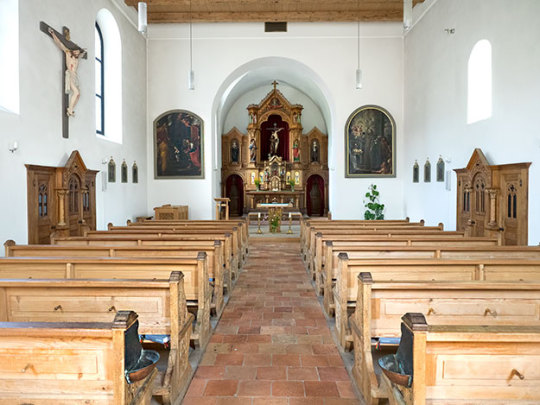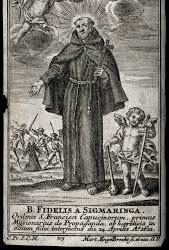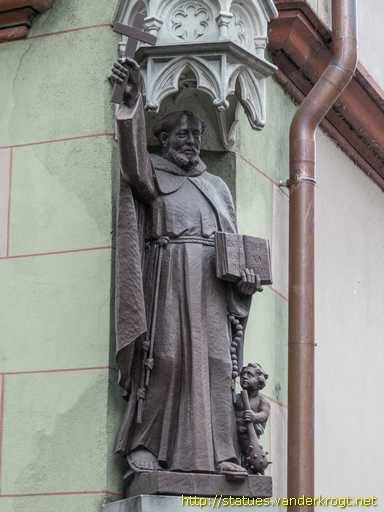#whirlbat
Text
Amatakka word list part 10
sehpamee - amee bark, the inner bark has a sweet-spicy flavor, similar to cinnamon (not gendered) [fialleril, January 02, 2017]
sehpu - bark, bast (not gendered) [BLW]
selentakka - Sleantah, another slave creole, a mixture of Túathcanúint, Twi'lekian Ryl, Basic, and some other languages; influenced by Amatakka and influencing Amatakka (not gendered) [Amatakka translation: BLW]/[Sleantah is from a fanfiction, I just don't really remember which]
sese - fly, flying insect (n) [BLW]
shammanu - Dragonsnake, a great aquatic dragon living in (among other places) the waters of Nal Hutta (n) [TCW Hunt for Ziro //translation by BLW]
sharu, shamaru - sluice, apply water, irrigate (not gendered) [BLW]
shashtu - bowl, cup (not gendered) [BLW]
shatto - fast, faster, from Huttese shado (not gendered) [BLW]
shem - knowledge, knowing (not gendered) [conjecture re: shmi, shmina]
shihrapalu - space!jerky, jerked meat of a dewback or a bantha; one of Tatooine's few exports [BLW]
shihr-kild - meat from dewbacks (not gendered) [BLW]
shihr, shihrtu - meat, meaty (not gendered) [BLW]
shihr-sihru - meat from rats (not gendered) [BLW]
shiik - Tatooine red beer, a common beverage with very little alcohol, cheaper than water or fresh milk (not gendered) [Naasade DS 20 Mirage //translation by BLW]
shmi - 1 wise person, wise one (n) [DAV 15 Children of the Force]
shmi - 2 first name of Shmi Ekkreth, she who sees the way [Naasade DS 2 Ruin]
shmina - 1 wisdom [DAV 15 Children of the Force]
shmina - 2 one of the symbols Anakin carved into Leia’s lightsaber in the Double Agent Vader ‘verse [DAV 15 Children of the Force]
shubbe - nausage, a sausage or otherwise cooked and prepared dish from ground meat or bread leftovers, along with salt and spices; likely served with eperu-lappa (dustcrepes) [The New Jedi Order: Star by Star //translation by BLW]
shulku - fit, suitable (not gendered) [BLW]
shursu - root, foundation, base (not gendered) [BLW]
shutinnu - bat, any flying mammal (n) [BLW]
shutinnu-sudu - whirling bat, whirlbat, animal hunted on Nal Hutta (n) [WotC Tempest Feud //translation by BLW]
sidi-qish - sidi gourd, item of produce found at the Mos Espa marketplace (not gendered) [TPM][Episode I The Visual Dictionary]
sihra - rat (n) [BLW]
silya - 1 a (medicinal) plant, it withstands "a thousand ailments" (not gendered) [BLW]
silya - 2 name of a member of the Darklighter family on Tatooine, Silya Yanome (f), Biggs' step-aunt [ANH novelization]
si - way, a way of thinking, religion, teaching (not gendered) [BLW]
skal - aggression, fight (not gendered) [conjecture re: depuskalta]
skaldepan - gladiator, unfree guard or soldier, literally aggression on a leash (n) [BLW]
skalta - killing, killer, winner (of a fight) (not gendered) [conjecture re: depuskalta]
skutz - scurrier, a rodent native to Tatooine, often considered a pest (from Huttese) (n) [SW Galaxies //translation by BLW]
slikatakkan - Ancient Klatooinian, a (by now rarely spoken) language of Klatooine; the Klatooinian natives usually speak only Huttese [Dangerous Covenants //translation by BLW]
spida - speeder, from Jawaese speeda (not gendered) [BLW]
sudu - whirling, spinning, swirling (not gendered) [BLW]
suru - canal, ditch, puddle (not gendered) [BLW]
sylo - poet, story-teller, from Ryl siolo (n) [BLW]
tabtu - salt for preserving meat, fish (not gendered) [BLW]
tag, tagr - white (not gendered), the color of the white-hot noonday suns, a powerful, multivalent symbol that can mean strength, ferocity, heat, and death [fialleril, June 01, 2016 //translation by BLW]
ta - hide-out, shelter, a safe place (not gendered) [conjecture re: chelik-ta]
tahu - to murder, to kill violently (from the Rakatan word for death, tah) (not gendered) [BLW]
takka - tongue, language, dialect (not gendered) [conjecture re: amatakka]
tak - tan, light brown, brown (from the Ryl word), a neutral color - gradations of brown and tan are the colors of the desert, the baseline of life [fialleril, June 01, 2016 //translation by BLW]
tando - fix, from Jawaese tando (not gendered) [BLW]
tapa - thank you, from Jawaese taa baa (not gendered) [BLW]
tar-levu - latke, literally potatoe-heart (not gendered) [@skywvlked, 04.18.2017]
tar- - made from root-vegetables and tubers, especially ansar root (not gendered) [fialleril, January 02, 2017]
tar-mish - dumplings, literally potatoe-ball (not gendered) [fialleril, January 02, 2017]
tavekriti - little red bird, one of the epithets of Ekkreth (n) or (o) [@triscribe, August 12, 2018]
tavetabtu - red salt (not gendered) [BLW]
tavru - red (not gendered), the color of Ekkreth, and therefore symbolizing courage, mischief, secret knowledge, disobedience, and laughter [fialleril, June 01, 2016][@triscribe, Apr 20th, 2020]
te masu em anu - expression of love; literally means “You are my freedom” (originally te masu em lukkema) [fialleril, January 02, 2017 //slight changes by BLW]
te masu nu - you are called, your name is [fialleril, December 05, 2017]
te masu - you are, you have, you represent [fialleril, December 05, 2017]
tematta - help, assistance [conjecture re: tematta nel uttar]
tematta nalla - midwife (n) [Amatakka, conjecture]
tematta nel uttar - "help from the core (worlds)." It's an idiom that's most commonly used to mean either "help that is never coming" or "help that just makes everything worse." [fialleril, June 01, 2018]
tena - 1 that which grows, that is, a plant (not gendered) [fialleril, august 16, 2016]
tena - 2 given name of Tena the Unfettered, the first to hear the voice of Ar-Amu in the whirlwind, it was she to whom Ar-Amu first made the promise that her children would one day be free (f) [fialleril, august 16, 2016]
tenarakin - 1 growth-bringer (n) [DAV 9 Trickster Steals the Moon]
tenarakin - 2 one of the three moons of Tatooine (n) (a Tatooine word); the Hutts call it Guermessa [DAV 9 Trickster Steals the Moon]
tenar - growth (not gendered) [conjecture re: tenarakin]
siolo is from the Star Wars Roleplaying Game Galactic Campaign Guide.
13 notes
·
View notes
Photo


24 April – Blessed Memorial of St Fidelis of Sigmaringen O.F.M.Cap. (1577-1622) Religious Priest and MARTYR, lawyer/advocate, philosopher, teacher, apostle of Eucharistic Adoration and charity – Attributes – sword; palm of martyrdom; heretics; the Morning Star; trampling on the word “heresy”; with a club set with spikes; with a whirlbat; with an angel carrying a palm of martyrdom; with Saint Joseph of Leonessa. Major Shrine at the Capuchin friary of Weltkirchen (Feldkirch), Austria
St Fidelis was born Mark Roy or Rey in 1577 in Sigmaringen, a town in modern-day Germany, then under the Principality of Hohenzollern-Sigmaringen. His father’s name was John Rey. He studied law and philosophy at the University of Freiburg. Roy subsequently taught philosophy at this university, ultimately earning the degree of Doctor of Law. During his time as a student he did not drink wine and wore a hair-shirt. He was known for his modesty, meekness and chastity.
In 1604, Roy accompanied, as preceptor (teacher-mentor), three young Swabian gentlemen on their travels through the principal parts of Europe. During six years of travel, he attended Mass very frequently. In every town they came to, he visited the hospitals and churches, passed several hours on his knees in the presence of the Blessed Sacrament and was generous to the poor, sometimes giving them the very clothes off his back.
Upon his return, he practiced law as a counselor or advocate, at Colmar, in Alsace where he came to be known as the ‘poor man’s lawyer’. He scrupulously forbore all invectives, detractions and whatever might affect the reputation of any adversary. Disenchanted with the evils associated with his profession, he was determined to enter the religious life as a member of the Capuchin friars.
As soon as Fidelis finished his course of theology, he was immediately employed in preaching and in hearing confessions. After becoming guardian of the Capuchin friary in Weltkirchen, Feldkirch (in present-day Austria), many residents of the town and neighbouring places were reformed by his zealous labours and several Calvinists were converted. The Congregation of the Doctrine of the Faith commissioned Fidelis to preach in the Graubünden region of eastern Switzerland. Eight other Capuchin friars were to be his assistants and they laboured in this mission under his direction.

The Calvinists of that territory, being incensed at his success in converting their brethren, loudly threatened Fidelis’ life and he prepared himself for martyrdom. Fidelis and his companions entered into Prättigau, a small district of Graubünden, in 1622, on the Feast of the Epiphany, January 6. The effects of his ardent zeal, where the Bishop of Coire sent a lengthy and full account to the Congregation for the Propagation of the Faith, enraged the Calvinists in that province.
On April 24, 1622, Fidelis made his confession, celebrated Mass and then preached at Grüsch. At the end of his sermon, which he had delivered with more than ordinary zeal, he stood silent all of a sudden, with his eyes fixed upon Heaven, in ecstasy. He foretold his death to several persons in the clearest terms and began signing his letters, “P. Fidelis, prope diem esca vermium” (“Father Fidelis, in days ahead to become food for worms”). After the service at Grüsch he and several companions traveled to Seewis. His companions noted that he was particularly cheerful.
On April 24, in a campaign organised by the Habsburgs, Fidelis was preaching under protection of some Austrian imperial soldiers in the Church at Seewis with the aim to reconvert the people of Seewis to Catholicism. During the sermon, his listeners were called “to arms” by the Calvinist agitators outside. Some of the people went to face the Austrian troops outside the church. Fidelis had been persuaded by the remaining Catholics to immediately flee with the Austrian troops out of Seewis, which he did but then returned alone to Grüsch. On his way back he was confronted by 20 Calvinist soldiers who demanded unsuccessfully that he renounce the Catholic faith and when he refused, they subsequently murdered him.
A local account:
From Grüsch he went to preach at Seewis, where, with great energy, he exhorted the Catholics to constancy in the faith. After a Calvinist had discharged his musket at him in the Church, the Catholics entreated him to leave the place. He answered that death was his gain and his joy, and that he was ready to lay down his life in God’s cause. On his road back to Grüsch, he met twenty Calvinist soldiers with a minister at their head. They called him a false prophet and urged him to embrace their sect. He answered: “I am sent to you to confute, not to embrace your heresy. The Catholic religion is the faith of all ages, I fear not death.” One of them beat him down to the ground by a stroke on the head with his backsword. Fidelis rose again on his knees and stretching forth his arms in the form of a cross, said with a feeble voice “Pardon my enemies, O Lord: blinded by passion they know not what they do. Lord Jesus, have mercy on me. Mary, Mother of God, succour me!.” Another sword stroke clove his skull and he fell to the ground and lay in a pool of his own blood. The soldiers, not content with this, added many stab wounds to his body with their long knives and hacked-off his left leg, as they said, to punish him for his many journeys into those parts to preach to them.It is said that a Catholic woman lay concealed near the place of Fidelis’ martyrdom as the saint was slain. After the soldiers had left, she came out to assess the incident and found the martyr’s eyes open, fixed on the heavens. He was buried by Catholics the next day.

The rebels were soon after defeated by the imperial troops, an event which the martyr had foretold them. The Protestant minister who had participated in Fidelis’ martyrdom, was converted by this circumstance, made a public abjuration of Calvinism and was received into the Catholic Church.
After six months, the martyr’s body was found to be incorrupt but his head and left arm were separated from his body. The body parts were then placed into two reliquaries, one sent to the Cathedral of Coire, at the behest of the bishop and laid under the High Altar; the other was placed in the Capuchin church at Weltkirchen, Feldkirch, Austria.

St Fidelis was beatified on 24 March 1729 by Pope Benedict XIII and canonised on 29 June 1746, Rome by Pope Benedict XIV




32 notes
·
View notes
Video
youtube
Saint of the Day – 24 April – St Fidelis of Sigmaringen O.F.M.Cap. (1577-1622) Religious Priest and MARTYR, lawyer/advocate, philosopher, teacher, apostle of Eucharistic Adoration and charity – Attributes – sword; palm of martyrdom; heretics; the Morning Star; trampling on the word “heresy”; with a club set with spikes; with a whirlbat; with an angel carrying a palm of martyrdom; with Saint Joseph of Leonessa. Major Shrine at the Capuchin friary of Weltkirchen (Feldkirch), Austria
0 notes